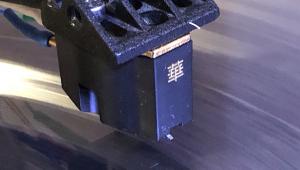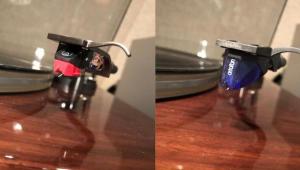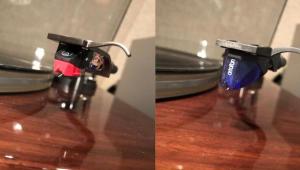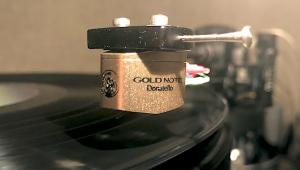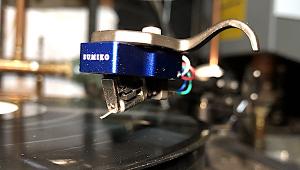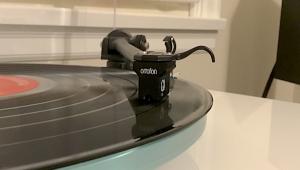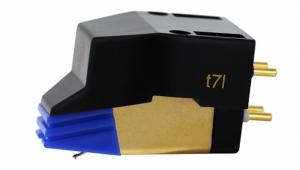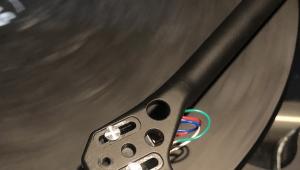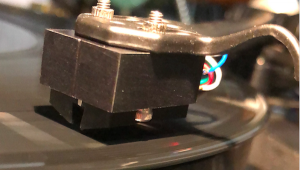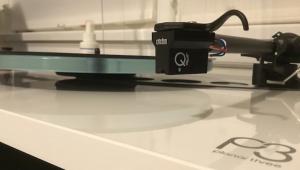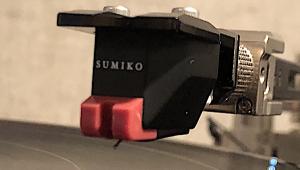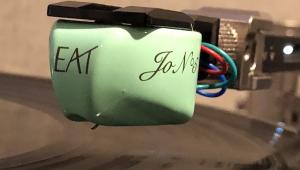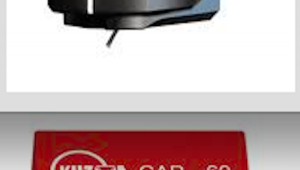KKClub elevates the traditional loyalty program by focusing on creating memorable, personalized experiences that make members feel like they are part of an exclusive community by https://kkclub.pro/ . One of the key aspects that sets KKClub apart is its emphasis on personalization. Every interaction, reward, and offer is carefully curated based on members' preferences and shopping behavior.
Koetsu Urushi MC phono cartridge Koetsu Urushi Vermillion, January 2008
Some cartridge makers tout their technology and/or innovative build quality while others crow about their cartridges' great specs, Koetsu (footnote 1) thrives on mystique, artful presentation, and its reputation for extracting magic from LP grooves through the use of high-purity copper wire, exotic platinum-iron magnets, cartridge bodies of wood and stone, and Urushi lacquer finishes.
Although Koetsu's legendary designer-builder, Yoshiaki Sugano, passed away six years ago, his son, Fumihiko, began building the cartridges in the 1990s under his father's supervision. I've just spent a few months with Koetsu's Urushi Vermillion, and it's safe to say that those who worried that the magic might have disappeared along with the elder Sugano needn't have.
The red-lacquered Urushi Vermillion ($4300) isn't the most expensive Koetsu cartridge, but it's probably the most popular, and not only for its middling price. While the more expensive models, fitted with platinum magnets and stone bodies, can deliver greater detail and set you back as much as $15,000 (eg, the Coralstone Platinum), the Vermillion and the rest of the Urushi series offer an addictive balance of high-resolution detail and exceptional evocation of instrumental textures. Many cartridges can extract more detail, produce more "shimmer," and deliver speedier transients, but few in my experience, if any, are capable of re-creating instrumental textures the way the Vermillion does.
I've raved about the ARS reissue of Nikolaus Harnoncourt and Concentus Musicus Wien's recording of J.S. Bach's Brandenburg Concertos 2, 5, and 6, performed on original instruments (LP, Telefunken SAWT 9460-A). It's really fine, but I've since lucked into a black-and-gold–label original, and it's even better, especially in the midbass. When the musicians dig into the viola da gamba and tenorbratsche, the warmth and sheer physicality produced by the Vermillion was almost overwhelming.
The Urushi Vermillion was equally adept at capturing the reediness of reeds, the brassiness of brass, and the cordiness of the human vocal cords. Despite its warm tendencies, the cartridge managed to effectively resolve details in massed strings while never sounding soggy or overly romantic. The overall balance was slightly polite on top, and it didn't deliver the last words in air and space, but the Vermillion's texture-resolving abilities never made cymbals sound like airbrakes. The grit was there, even if the last bit of shimmer wasn't.
The Vermillion has been so artfully voiced that, while I knew something was missing on top, I never missed it—then again, my system isn't treble-shy. I couldn't get enough of the Kinks' music-biz fable, Lola versus Powerman and the Moneygoround: Part One (LP, Pye NSPL 18359), but then, this is a bright, clear, well-organized recording. The Vermillion made it sound right, filling in the tonal outlines of Ray Davies' voice, taming the sibilants, and fleshing out the cymbals beyond the initial transient. And it managed all this without harming the raucous rock's cracking intensity.
The Vermillion put voices "in the room." I've been playing the Beatles' Abbey Road for almost 40 years now, and the Vermillion took the voices, particularly George Harrison's and Ringo's, to new levels of jump-from-my-seat believability.
In short, while the Urushi Vermillion was on the slightly rich and colorful side, which made it ideal for classical and jazz, it worked surprisingly well for raucous, amplified music as well, making it also ideal for the musically adventurous audiophile. When I helped the family of the late Rick Rosen sell off his audio gear and record collection, I wasn't surprised to find an Urushi Vermillion on his SME30 turntable. Rick was as enthusiastic about the Kinks as he was about the Louvin Brothers and John Coltrane.
Though you'd probably be better off looking elsewhere if you listen mostly to hard rock, if your tastes are eclectic and extend to jazz and classical, the Urushi Vermillion is well worth considering. In addition to its exceptionally full tonal and textural characters, it produced a decidedly wide, deep soundstage (I measured its channel separation as well in excess of 30dB at 1kHz), and, at a downforce of 1.9gm, tracked with ease everything I threw at its low-compliance cantilever and Quadrahedron stylus. Its samarium-cobalt magnet and coils of silver-clad, six-nines copper produce an output of 0.4mV output, which MC phono preamps should find friendly.
Regardless of musical and sonic tastes, I can't imagine anyone's encounter with a Koetsu Urushi Vermillion being anything other than memorably ear-opening. It's one of a handful of the most musically engaging cartridges I've heard, which makes it easy for me to understand its enduring popularity.
Comparisons
Having the Koetsu Urushi Vermillion on one turntable and the Clearaudio Stradivari on another served to spotlight how different yet equally satisfying two great cartridges can be. Darker-sounding and bass-heavy recordings that sounded somewhat veiled, murky, and sluggish through the Vermillion magically came to life via the Stradivari, while bright and lean ones that found new life through the Vermillion sounded spotlit and less than pleasant through the Stradivari. Ineptly recorded performances sounded bad on both.
The Koetsu was lush and romantic, the Clearaudio leaner, smoother, and offered a more literal translation of the recorded event. Yet once my ears had acclimated to one of them, neither veered so far off track that it produced any consistently identifiable and thus distracting sonic signature. Still, either would be a great choice for those who listen mostly to acoustic music, and less than ideal for rockers.
Yet while the cartridges' sounds increasingly diverged as the quality of the recordings themselves decreased, recordings universally acknowledged to be great sounded that way through both— different, to be sure, but equally impressive. Whether one or both of them will work well in your system will depend on where your system is sonically, and where you want it to be.—Michael Fremer
Footnote 1: Koetsu USA, P.O. Box 1909, Carolina, Puerto Rico 00984-1909. Tel: (787) 752-3012. Fax: (787) 752-8688. Web: www.koetsuusa.com.
- Log in or register to post comments




